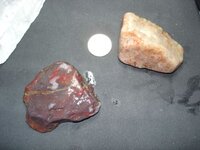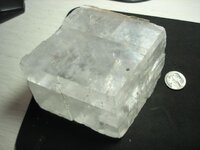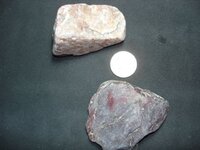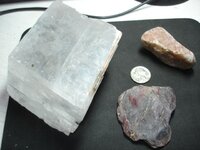coinman66
Hero Member
Does anybody know what these rocks are? Any help would be greatly appreciated! The coin for scale is a nickel, also i took one pic which i think is the last one, wet. The big cubical rock was brought back from the southwest U.S., and the other two were found by me around a river in east central Illinois. Any help would be greatly appreciated. Im thinking about tumbling the smaller two rocks, what do you think? Thank you for your input.









